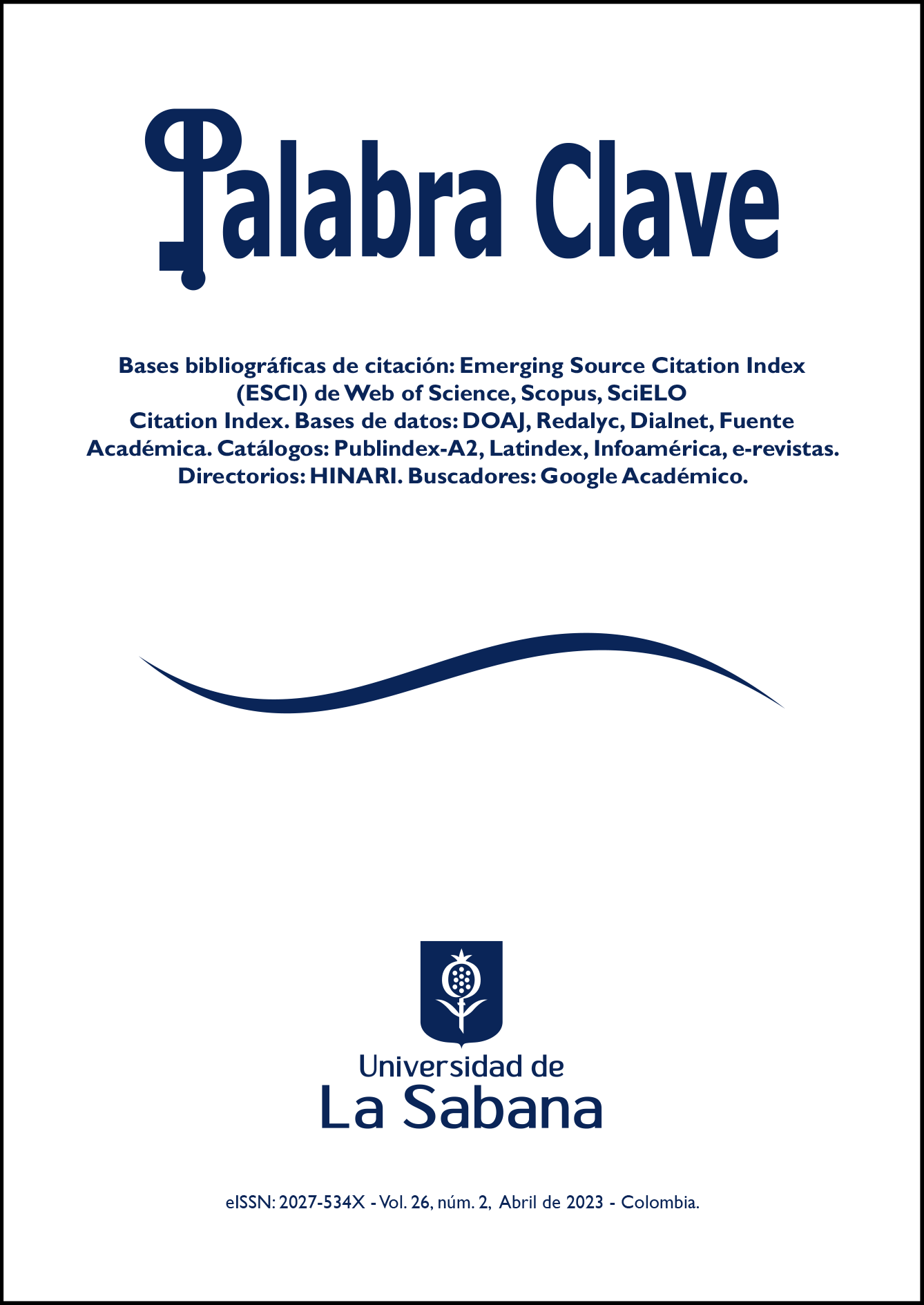How is the War between Russia and Ukraine Depicted on Twitter? Rhetorical Analysis of the Most Popular Memes
DOI:
https://doi.org/10.5294/pacla.2023.26.2.8Keywords:
Communication, Internet, social media, public opinion, audience participationAbstract
Parallel to the representations of the media, memes have become a powerful tool for Internet users to convey opinions and express emotions about war, giving rise to an unexpected communication phenomenon: talking about this fact with humor, despite the thousands of deaths and millions of displaced people. Given their persuasive nature and exponential dissemination, memes contribute to creating public opinion and social reality. Thus, this study aims to decipher and describe the meanings that predominate in the most popular memes about this event and identify their emotional or cognitive intention, rhetoric and style of humor, purpose, and, in the case of memes considered harmful, their objectives and audience to which the harm is targeted. From a rhetorical and content analysis performed on the ten most popular memes on Twitter, we found that these have a high moral content: they point out the mistakes of others. Criticism is directed at Latin America, Putin, the Western media, and the North Atlantic Treaty Organization (NATO). The predominant emotion and intention are fear and social criticism. The intertextual character of memes implies three degrees of semantic dependency. These results show that behind apparently innocuous humor, there are ideologies, perspectives, and social criticism that find support in the network.
Downloads
References
Ayala, T. (2014). Redes sociales, poder y participación ciudadana. Revista Austral de Ciencias Sociales, 26, 23-48. https://doi.org/10.4206/rev.austral.cienc.soc.2014.n26-02
Barthes, R (1971). Elementos de la semiología. Alberto Corazón.
Barthes, R. (1986). Lo obvio y lo obtuso. Imágenes, gestos, voces. Paidós.
Candale, C.-V. (2017). Las características de las redes sociales y las posibilidades de expresión abiertas por ellas. La comunicación de los jóvenes españoles en Facebook, Twitter e Instagram. Colindancias. Revista de la Red de Hispanistas de Europa Central, 8, 201-220.
Cao, M. (1998). La retórica visual como análisis posible en la didáctica del arte y de la imagen. Arte, Individuo y Sociedad, 10), 39-64.
Castells, M. (2001). La galaxia Internet. Areté.
Chowdhary, K. (2020). Fundamentals of artificial intelligence. Springer. https://doi.org/10.1007/978-81-322-3972-7
De Dios, S., Romero-Rodríguez, L. y Aguaded, I. (2020). El lenguaje como creador de realidades y opinión pública: análisis crítico a la luz del actual ecosistema mediático. Íconos. Revista de Ciencias Sociales, 67, 139-157. https://doi.org/10.17141/iconos.67.2020.3942
Diresta, R. (2018). Computational propaganda: If you make it trend, you make it true. The Yale Review, 106(4), 12-29. https://doi.org/10.1111/yrev.13402
Gal, N., Shifman, L. y Kampf, Z. (2013). It gets better: Internet memes and the construction of collective identity. New Media & Society, 17(1), 1-17. https://doi.org/10.1177/1461444814568784
Gómez, H. (2013). Desinformación en Internet y la hegemonía en redes sociales. Gestión de las Personas y Tecnología, 5(16), 26-34.
Katz, Y. y Shifman, L. (2017). Making sense? The structure and meanings of digital memetic nonsense. Information, Communication & Society, 20(6), 825-842. https://doi.org/10.1080/1369118X.2017.1291702
Krippendorff, K. (1980). Content analysis. Sage.
López, A. (2015). El impacto de Twitter en el periodismo: un estado de la cuestión. Revista de la Asociación Española de Investigación de la Comunicación, 2(4), 34-41. https://doi.org/10.24137/raeic.2.4.6
Martin, R., Puhlik-Doris, P., Larsen, G., Gray, J. y Weir, K. (2003). Individual differences in uses of humor and their relation to psychological well-being: Development of the humor styles questionnaire. Journal of Research in Personality, 37, 48-75. https://doi.org/10.1016/S0092-6566(02)00534-2
Milner, R. (2016). The world made meme: Discourse and identity in participatory media. MIT Press. https://doi.org/10.7551/mitpress/9780262034999.001.0001
Noelle-Neumann, E. (1995). La espiral del silencio. Opinión pública: nuestra piel social. Paidós.
Pandey, A., Mukherjee, S., Bajaj, S. y Jonnalagadda, A. (2019). Identification of meme genre and its social impact. Smart Intelligent Computing and Applications Smart Innovation, Systems and Technologies, 105, 11-21. https://doi.org/10.1007/978-981-13-1927-3_2
Petrova, Y. (2021). Meme language, its impact on digital culture and collective thinking. E3S Web of Conferences, 273, 11026. https://doi.org/10.1051/e3sconf/202127311026
Piata, A. (2019). Stylistic humor across modalities: The case of classical art memes. Internet Pragmatics, 2(2), 174-201. https://doi.org/10.1075/ip.00031.pia
Pidkuĭmukha, L. y Kiss, N. (2020). Battle of narratives: Political memes during the 2019 Ukrainian presidential election. Cognitive Studies, 20, 1-23. https://doi.org/10.11649/cs.2246
Pramanick, S. et al. (2021). Detecting harmful memes and their targets. Findings of the Association for Computational Linguistics, 2783-2796. https://doi.org/10.18653/v1/2021.findings-acl.246
Pujol, F. (2018). La prensa en Twitter: análisis de actividad e impacto en 2018. Cuadernos de Periodistas, 38, 54-67.
Rousseau, J. J. (1750). Discurso sobre las artes y las ciencias. iUniverse.
Silverstone, R. (2004). ¿Por qué estudiar los medios? Amorrortu.
Sola-Morales, S. (2020). Humor en tiempos de pandemia. Análisis de memes digitales sobre la covid-19. Zer, 25(49), 33-58. https://doi.org/10.1387/zer.21817
Torres-Marín, J., Navarro-Carrillo, G., Eid, M. y Carretero-Dios, H. (2022). Humor styles, perceived threat, funniness of Covid-19 memes, and affective mood in the early stages of Covid-19 lockdown. Journal of Happiness Studies, 1-21. https://doi.org/10.1007/s10902-022-00500-x
Wagener, A. (2021). The postdigital emergence of memes and GIFs: Meaning, discourse, and hypernarrative creativity. Postdigital Science and Education, 3, 831-850. https://doi.org/10.1007/s42438-020-00160-1
Wiggins, B. (2018). The discursive power of memes in digital culture: Ideology, semiotics, and intertextuality. Routledge. https://doi.org/10.4324 /9780429492303
Woods, H. y Hahner, L. (2019). Make America meme again: The rhetoric of the Alt-Right. Peter Lang. https://doi.org/10.3726/b14436
Zanette, M., Blikstein, I. y Visconti, L. (2019). Intertextual virality and vernacular repertoires: Internet memes as objects connecting different online worlds. Revista de Administraçao de Empresas, 59(3), 157-169. https://doi.org/10.1590/s0034-759020190302
Published
How to Cite
Issue
Section
License
Copyright (c) 2023 Palabra Clave

This work is licensed under a Creative Commons Attribution-NonCommercial-NoDerivatives 4.0 International License.
1. Proposed Policy for Journals That Offer Open Access
Authors who publish with this journal agree to the following terms:
- Authors retain copyright and grant the journal right of first publication with the work simultaneously licensed under a Creative Commons Attribution License that allows others to share the work with an acknowledgement of the work's authorship and initial publication in this journal.









